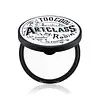What's inside
What's inside
 Key Ingredients
Key Ingredients

 Benefits
Benefits

 Concerns
Concerns

 Ingredients Side-by-side
Ingredients Side-by-side

Talc
AbrasiveSilica
AbrasiveMethyl Methacrylate Crosspolymer
Dimethicone
EmollientCaprylic/Capric Triglyceride
MaskingNylon-12
Mica
Cosmetic ColorantCI 77492
Cosmetic ColorantDiisostearyl Malate
EmollientTriethylhexanoin
MaskingCI 77891
Cosmetic ColorantCI 77491
Cosmetic ColorantDimethiconol Stearate
EmollientCI 77499
Cosmetic ColorantSynthetic Beeswax
Emulsion StabilisingGlyceryl Caprylate
EmollientEthylhexylglycerin
Skin ConditioningAllantoin
Skin ConditioningMethicone
EmollientPropanediol
SolventPentylene Glycol
Skin ConditioningTocopheryl Acetate
AntioxidantPinus Sylvestris Leaf Extract
TonicCocos Nucifera Fruit Extract
EmollientAmethyst Powder
AbrasiveWater
Skin ConditioningButylene Glycol
Humectant1,2-Hexanediol
Skin ConditioningHydrogenated Lecithin
EmulsifyingCitrus Junos Fruit Extract
Skin ConditioningCitrus Limon Fruit Extract
MaskingTalc, Silica, Methyl Methacrylate Crosspolymer, Dimethicone, Caprylic/Capric Triglyceride, Nylon-12, Mica, CI 77492, Diisostearyl Malate, Triethylhexanoin, CI 77891, CI 77491, Dimethiconol Stearate, CI 77499, Synthetic Beeswax, Glyceryl Caprylate, Ethylhexylglycerin, Allantoin, Methicone, Propanediol, Pentylene Glycol, Tocopheryl Acetate, Pinus Sylvestris Leaf Extract, Cocos Nucifera Fruit Extract, Amethyst Powder, Water, Butylene Glycol, 1,2-Hexanediol, Hydrogenated Lecithin, Citrus Junos Fruit Extract, Citrus Limon Fruit Extract
Ingredients Explained
These ingredients are found in both products.
Ingredients higher up in an ingredient list are typically present in a larger amount.
1,2-Hexanediol is a synthetic liquid and another multi-functional powerhouse.
It is a:
- Humectant, drawing moisture into the skin
- Emollient, helping to soften skin
- Solvent, dispersing and stabilizing formulas
- Preservative booster, enhancing the antimicrobial activity of other preservatives
Butylene Glycol (or BG) is used within cosmetic products for a few different reasons:
Overall, Butylene Glycol is a safe and well-rounded ingredient that works well with other ingredients.
Though this ingredient works well with most skin types, some people with sensitive skin may experience a reaction such as allergic rashes, closed comedones, or itchiness.
Learn more about Butylene GlycolCi 77891 is a white pigment from Titanium dioxide. It is naturally found in minerals such as rutile and ilmenite.
It's main function is to add a white color to cosmetics. It can also be mixed with other colors to create different shades.
Ci 77891 is commonly found in sunscreens due to its ability to block UV rays.
Learn more about CI 77891Ethylhexylglycerin (we can't pronounce this either) is commonly used as a preservative and skin softener. It is derived from glyceryl.
You might see Ethylhexylglycerin often paired with other preservatives such as phenoxyethanol. Ethylhexylglycerin has been found to increase the effectiveness of these other preservatives.
Mica is a naturally occurring mineral used to add shimmer and color in cosmetics. It can also help improve the texture of a product or give it an opaque, white/silver color.
Serecite is the name for very fine but ragged grains of mica.
This ingredient is often coated with metal oxides like titanium dioxide. Trace amounts of heavy metals may be found in mica, but these metals are not harmful in our personal products.
Mica has been used since prehistoric times throughout the world. Ancient Egyptian, Indian, Greek, Roman, Aztec, and Chinese civilizations have used mica.
Learn more about MicaNylon-12 is a polymer. It is derived from 12-aminododecanoic acid, an omega-amino fatty acid
According to a manufacturer, it is a talc substitute. Like talc, nylon-12 gives products a satin feel. The manufacturer also claims this ingredients does not block pores and has moderate oil absorption.
This ingredient may not be reef-safe.
Learn more about Nylon-12Silica, also known as silicon dioxide, is a naturally occurring mineral. It is used as a fine, spherical, and porous powder in cosmetics.
Though it has exfoliant properties, the function of silica varies depending on the product.
The unique structure of silica enhances the spreadability and adds smoothness, making it a great texture enhancer.
It is also used as an active carrier, emulsifier, and mattifier due to its ability to absorb excess oil.
In some products, tiny microneedles called spicules are made from silica or hydrolyzed sponge. When you rub them in, they lightly polish away dead skin layers and enhance the penetration of active ingredients.
Learn more about SilicaWater. It's the most common cosmetic ingredient of all. You'll usually see it at the top of ingredient lists, meaning that it makes up the largest part of the product.
So why is it so popular? Water most often acts as a solvent - this means that it helps dissolve other ingredients into the formulation.
You'll also recognize water as that liquid we all need to stay alive. If you see this, drink a glass of water. Stay hydrated!
Learn more about Water